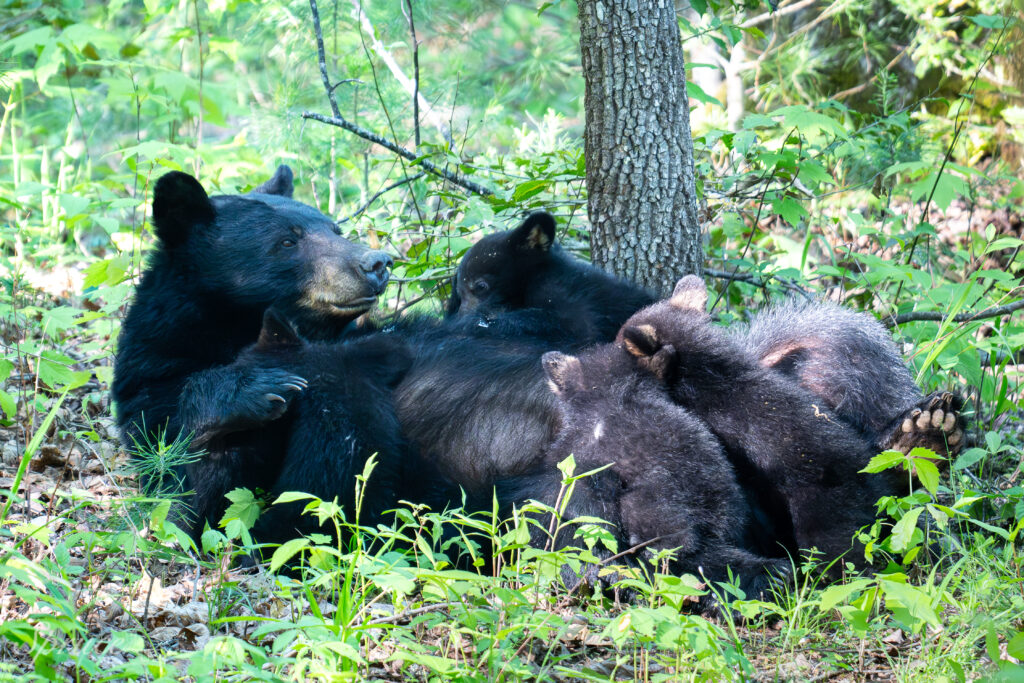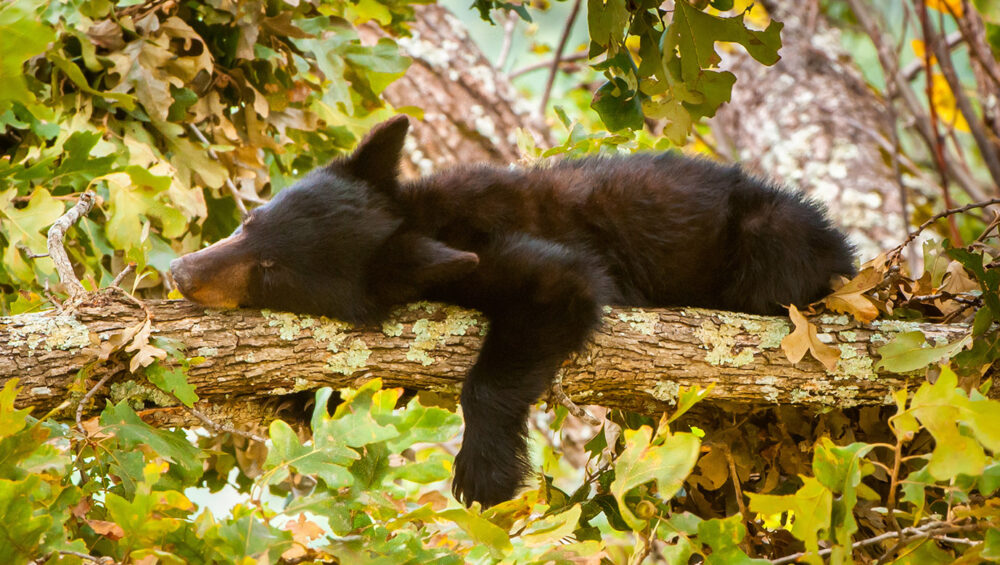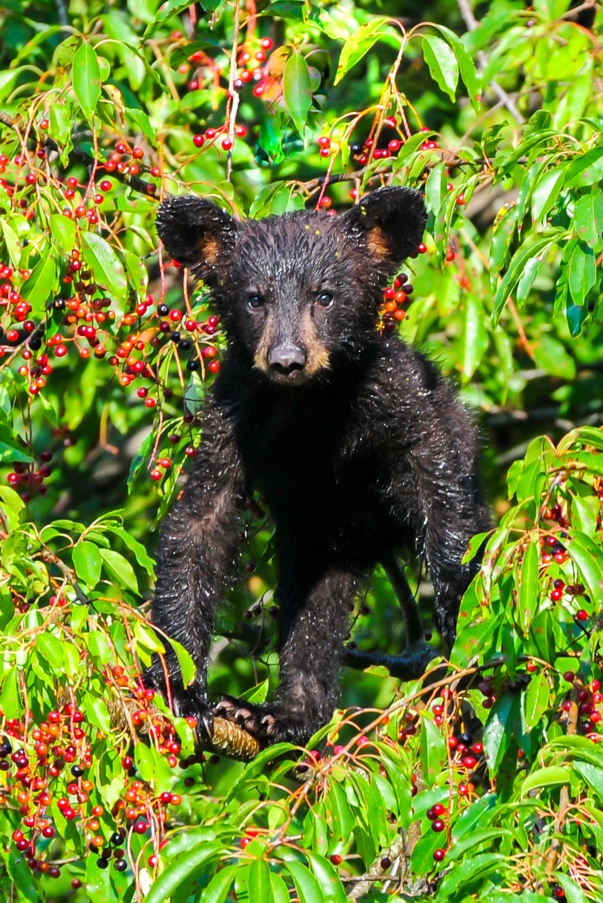For wildlife and nature photographers, the American black bear (Ursus americanus) of the Great Smoky Mountains presents an unparalleled subject. This region hosts one of the most dense black bear populations in the eastern United States, with an estimated 1,500 individuals across its 521,000+ acres. Females and their cubs, in particular, offer compelling photography subjects. They have a fascinating life cycle, foraging behaviors, and denning habits molded by the Appalachian ecosystem.
Life Cycle: The Reproductive Rhythm of Smoky Mountain Black Bears
Female black bears follow a biennial reproductive cycle. According to research from the University of Tennessee and the National Park Service, females typically reach sexual maturity between 3 and 5 years. First litters are often delayed until sufficient body condition is achieved. Breeding typically occurs June or later. Black bears employ delayed implantation: fertilized eggs remain dormant until November, implanting only if the female has amassed adequate fat reserves (often 20–25% of her body weight) through autumn foraging.
Denning is a critical phase for pregnant black bear. The Great Smoky Mountains National Park notes that bears enter dens between late fall and early winter, driven by declining food availability and cooler temperatures. In this rugged landscape, dens are often located in hollow trees, rock cavities, or excavated burrows beneath the root balls of downed trees.
Pregnant females give birth in their den between mid-January and early February. Two to three cubs are typical, though litters of 4 are not uncommon in years of abundant food. Cubs weigh less than a pound, emerging blind, toothless, and reliant on their mother’s high-fat milk. A bear’s milk is approximately 33% fat, per the American Bear Association. In Spring, when families exit dens, cubs weigh 4-6 pounds. They remain with their mother for 16–18 months learning to forage and survive. In the cub’s second summer the mother leaves them to breed again.

Foraging Habits: Sustaining Life in the Smokies
The dietary habits of female black bears and their cubs reflect the region’s seasonal bounty. The National Park Service reports that their diet is 85–90% plant based. In spring, females exploit emerging vegetation, such as squawroot (Conopholis americana), tender grasses, and roots. Summer shifts focus to berries and fruits, such as blackberries, cherries, and huckleberries for critical calories. By late summer and fall, acorns and hickory nuts dominate, with females consuming up to 15,000–20,000 calories daily to build fat reserves. Additional protein comes from insects (e.g., yellow jacket nests raided in late summer), grubs, and occasional carrion or small mammals.
Black bear digging up a yellow jacket nest
Elevate Your Photography with Spruce Photo Tours
The Great Smoky Mountains offer a premier stage for photographing black bears and their cubs, and Spruce Photo Tours provides the expertise to make it happen. Our Smoky Mountain Black Bear Workshop offers a small group experience; while private guided tours offer one-on-one photography instruction. Whether you seek a multi-day workshop or a tailored private tour, our approach ensures personalized instruction and an unforgettable time exploring the Smoky Mountains. Reserve your spot today at SprucePhotoTours.com and join us to photograph Smoky Mountain black bears. Your next amazing image awaits.
References:
National Park Service, Great Smoky Mountains: “Black Bears” (nps.gov/greatsmokymountains)
University of Tennessee, Department of Forestry, Wildlife and Fisheries: “Black Bear Ecology”
American Bear Association: “Black Bear Biology” (americanbear.org)
Tennessee Wildlife Resources Agency: “Black Bear Management in Tennessee” (tn.gov/twra)



1 Comment
[…] about the amazing life cycle of American Black Bears in the Smoky Mountains? Read our latest blog “The Fascinating Lives of American Black Bears” on our Spruce Photo Tours […]